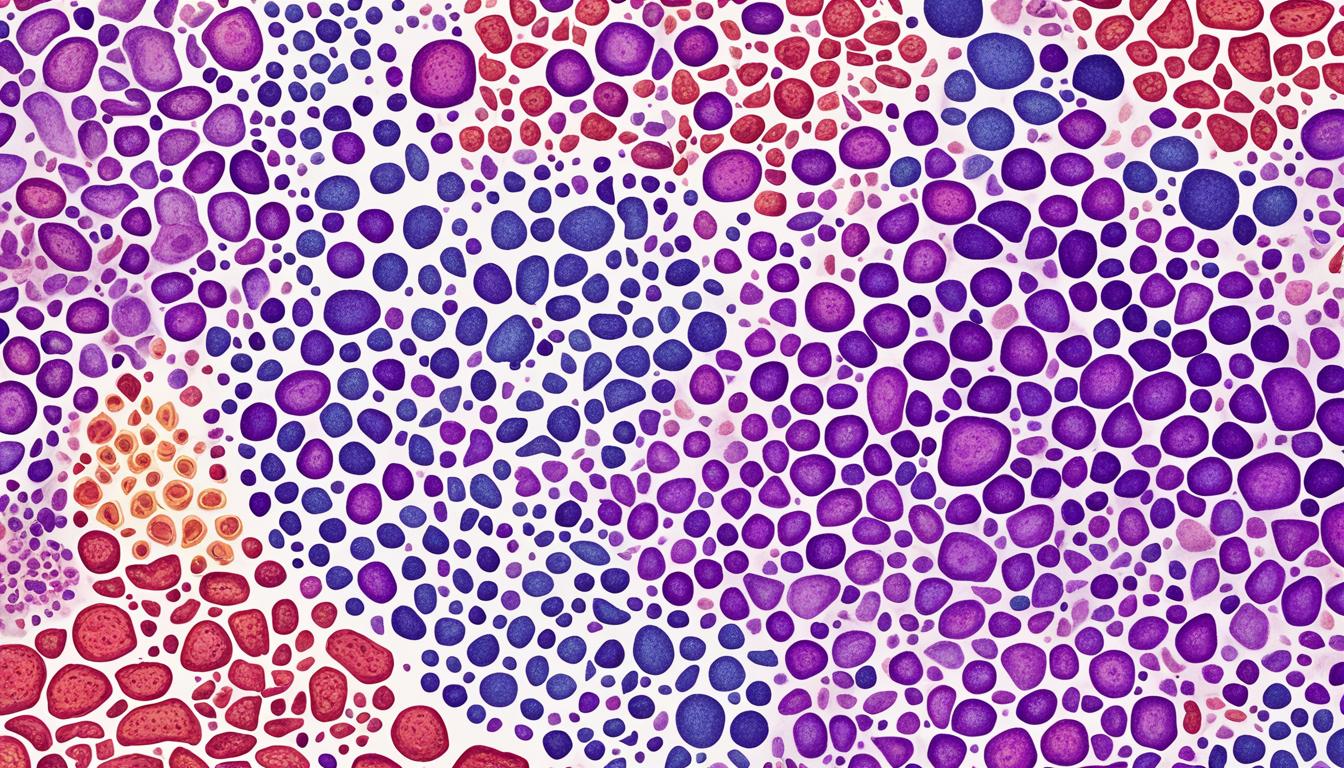Henoch-Schonlein purpura (HSP) is a disease that mainly affects kids. It causes small blood vessels to become inflamed. This leads to symptoms like red rashes, joint, and stomach pain.
These rashes appear red and don’t fade when pressed. They are found mainly on the legs and buttocks. However, they can also be seen on the arms, ears, and face. Joint pain, often with swelling, is common. Stomach pain, with cramps or vomiting, is also a usual sign.
The true cause of HSP is not fully known. It’s thought to be linked to the immune system, responding to viral infections. HSP might happen after a cold or flu. This suggests that these viruses could lead to the immune system acting up and causing HSP.
Doctors check for HSP by looking at certain signs. These include the rashes, joint pain, abdominal issues, and special urine test results. Currently, there is no specific cure for HSP. But, in bad cases, steroids might help reduce the symptoms.
Yet, there’s hope with stem cell therapy. A type called umbilical cord-derived mesenchymal stem cell (ucMSC) transplantation looks promising. It might help with HSP and other issues like liver diseases and low platelet counts. Still, more research is needed to see how well stem cells can help with HSP.
Key Takeaways:
- Henoch-Schonlein purpura (HSP) is a disease that causes small blood vessels to get inflamed.
- Symptoms include red rashes that stay when pressed, joint pain, and stomach ache.
- HSP is thought to be an immune system reaction caused by some viruses.
- Diagnosing HSP looks at the rashes, joint pain, stomach issues, and special urine tests.
- Stem cell therapy, especially ucMSC transplantation, is a hopeful area for treating HSP.
Symptoms and Diagnosis of Henoch-Schonlein purpura
HSP often shows up with specific signs. The main one is palpable purpura. It’s red rashes that can be felt and won’t fade under pressure. These rashes are usually found on the legs and buttocks. But, they might also appear on the arms, ears, and face.
- Palpable purpura – red rashes that can be felt and do not disappear with pressure
- Arthritis – swollen and painful joints, especially in the large joints
- Abdominal pain – cramping and occasional vomiting
- Urinary symptoms – painless bleeding into the urine (hematuria)
Kids with HSP might get swollen, painful joints, called arthritis. This happens most often in their knees and ankles. They might also have tummy aches. These can cause cramps and sometimes lead to throwing up.
Some children with HSP can have kidney issues. This can cause blood in their pee, which doesn’t hurt. Doctors can spot this through a urine test. Finding protein or blood cells in the pee can help diagnose HSP.
To diagnose HSP, doctors look for its telltale signs. These include the palpable purpura, arthritis, tummy pain, and odd urine results.
Symptoms of Henoch-Schonlein purpura
| Symptom | Description |
|---|---|
| Palpable purpura | Red rashes that can be felt and do not disappear with pressure |
| Arthritis | Swollen and painful joints, particularly in the large joints |
| Abdominal pain | Cramping and occasional vomiting |
| Urinary symptoms | Painless bleeding into the urine (hematuria) |
Causes and Risk Factors of Henoch-Schonlein purpura
Henoch-Schonlein purpura (HSP) is linked to our immune system, but we don’t know exactly why it happens. Experts think various things like viral infections, genetic issues, and the world around us can start HSP.
It often shows up after someone has had a virus, like a cold or flu. These viruses can make the immune system react, which can lead to HSP. But, HSP isn’t something you can catch from another person.
Genes might also have a part in who gets HSP. Some people might inherit something that makes HSP more likely. Things in our genes that deal with how the immune system and blood vessels work could be involved.
Outside things, like certain toxins or allergens, might make you more likely to get HSP too. We know these things from the world around us can matter. But, we need to study more to really know what these things are.
HSP usually hits kids more than adults, usually between ages 2 and 6. It’s one of the most usual blood vessel issues kids have. More boys have it than girls, but we’re not sure why yet.
Summary:
Henoch-Schonlein purpura is connected to our immune system. We think viral infections, genes, and things around us help cause HSP. Finding these causes is key to dealing with HSP, especially in kids. It helps with spotting and managing this condition.
Stem Cell Therapy for Henoch-Schonlein purpura
Umbilical cord-derived mesenchymal stem cell (ucMSC) therapy is a new hope for people with Henoch-Schonlein purpura (HSP). It’s also aiding those with liver cirrhosis and immune thrombocytopenia. Studies found that ucMSC transplantation helps these patients.
A 12-year-old boy with HSP and liver cirrhosis saw great results with ucMSC treatment. His skin rash disappeared, his platelet count went up, and his liver function improved. This success story shows how ucMSCs can treat HSP and its issues.
Using ucMSCs for HSP is a fresh idea. More research is underway to learn how ucMSCs help. Although we need more studies, this treatment strategy looks very promising. It could be the key to managing HSP in the future.

